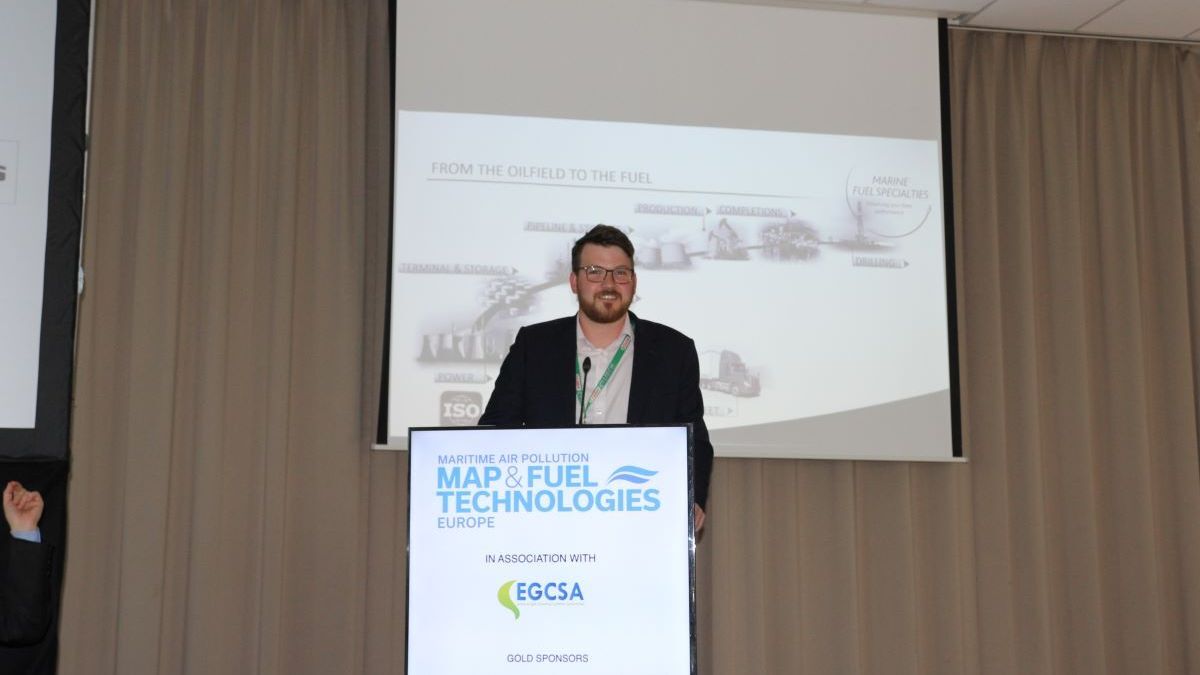A suite of innovations and ideas around fuels and materials were presented at the Maritime Air Pollution & Fuel Technologies Conference, Europe, in Amsterdam
The development of scrubbers should not be hindered, according to EGCSA director Don Gregory speaking at the Maritime Air Pollution & Fuel Technologies Conference, Europe (MAP 2022). He said there are now a range of exciting developments in fuel and corrosion-resistant materials for scrubbers.
On the fuel side, Innospec is a developer and manufacturer of speciality additives for petroleum-based fuels, coal, and bio-fuels, and as marine & key account manager, Joshua Townley said: “You may not have heard of us, but you have certainly used our products: around 98% of all aviation fuel is treated by Innospec [as is] around 60% of diesel sold across Europe.”
In the marine sector, Innospec conservatively estimates the use of its products can make a 3% difference in the CII rating. The key, he said, is that Innospec treats the fuel all the way through the spectrum.
Mr Townley noted that by using Innospec, a vessel can go from a C rating (using the class NK calculator), to a B rating. “[This] may not seem like a lot,” said Mr Townley, “but that carries on until 2027; whereas an untreated vessel may be an E and therefore may not comply with CII.”
Fuel choice is going to be an important factor in achieving IMO GHG targets and there is a wide range of fuels to choose from: heavy fuel oil (with scrubbers), bio-fuels, LNG, LPG, methanol, ammonia, hydrogen in ICE or fuel cells, to name a few. Current technology can take advantage of bio-fuels and experts in fuel testing, VPS – which was also a sponsor of the event – group commercial & business development director Steve Bee explained the latest developments in bio-fuels in the maritime arena. He noted first-generation bio-fuels are derived from agricultural crops, which raises questions regarding human consumption versus fuel use, and he noted issues when looking at the carbon output on a well-to-wake basis. Newer bio-fuels made from waste have a much lower CO2 reduction factor, in the order of 75% or more.
Handling and storage of bio-fuels is also a concern: “We would certainly avoid storing bio-fuels for more than three months,” he said. “If that is unavoidable, we would recommend periodic sampling every two three months and tests for a minimum of oxidation, stability, acid number, and water bacterial presence.”
He added that, as there is no standard for testing bio-fuels, precautions need to be taken: “Bio-fuel is a drop-in fuel; you can use it for existing engines with little to no retrofit capex required. But, they do require some special attention with regard to onboard operations, certain fuel storage, handling and treatment.”
Failing to look after the fuel is failing to look after a valuable investment. The choice of materials is vital for the marine environment and stainless steel is often specified. But there is ’stainless steel’ and ’stainless steel’ and when Costa Group vice president and chief executive of Ecospray Technologies Franco Porcellacchia was relaying his experience of developing and using scrubbers, he name-checked Finnish company Outokumpo as the provider of stainless steel for the Ecospray scrubbers.
Speaking in greater detail about the different properties of stainless steels at MAP 2022 was Outokumpu’s senior manager, head of TVC marine & energy, Timo Mayer. The company has been working with land-based scrubbers for nearly a decade and has built up a body of knowledge regarding the environment within a scrubber. “It is a really aggressive environment, and for that you need to carefully select the material,” he said. “You must fit this with the types of corrosion that might occur.”
Many are familiar with 316 stainless steel, but there are other grades that are better at handling high temperatures and caustic environments. “Choose the right materials and you will not face any corrosion and have a long life for your scrubber,” said Mr Mayer.






